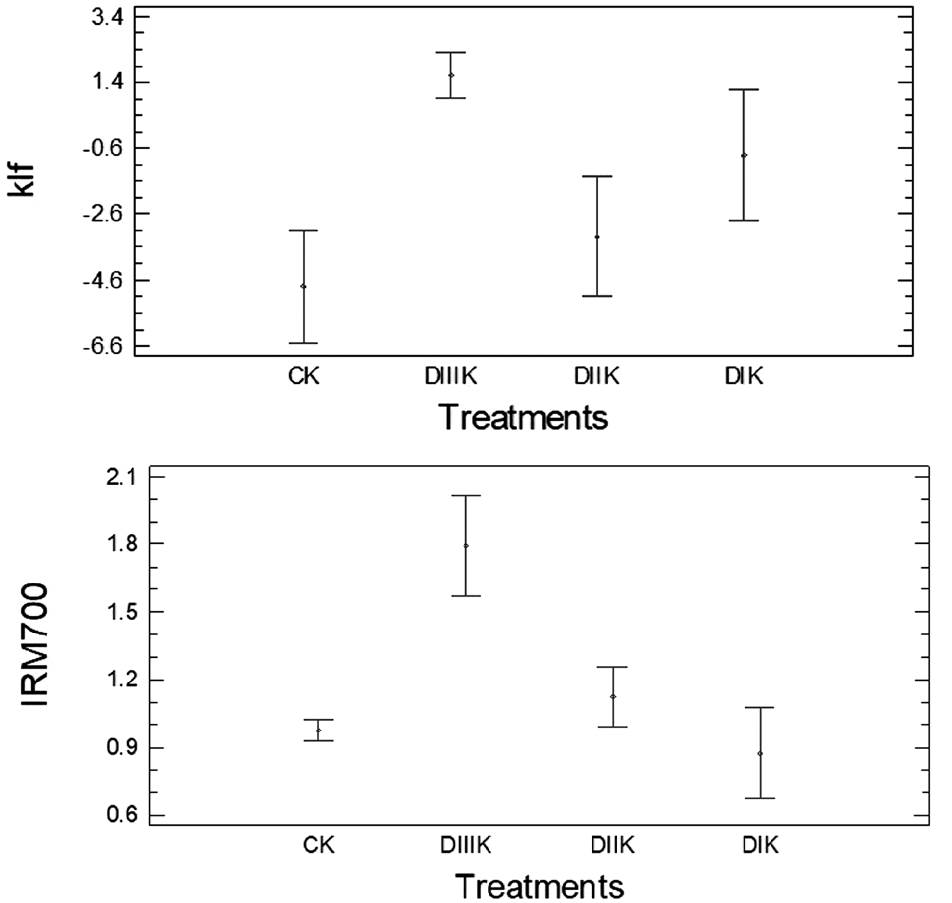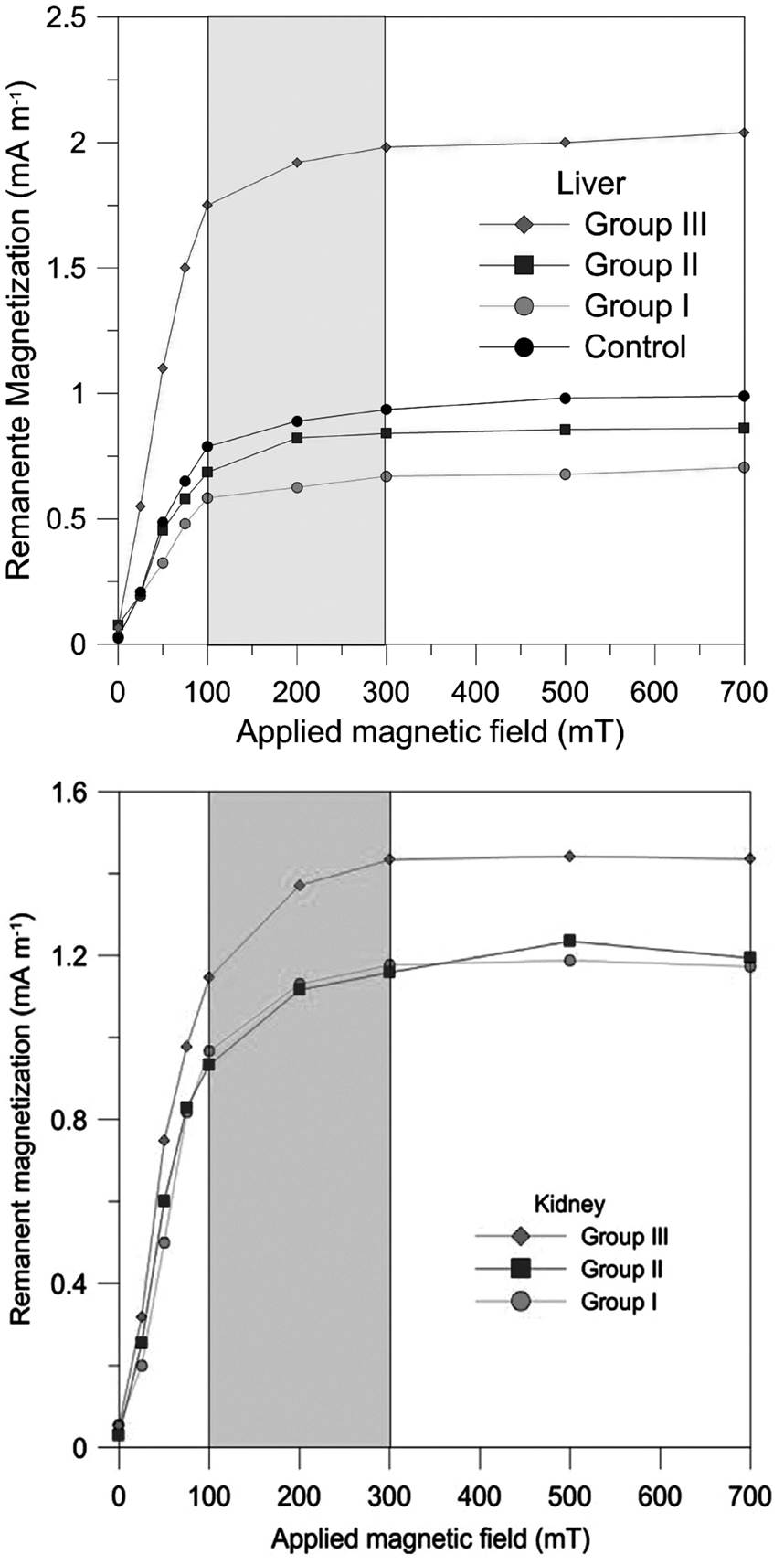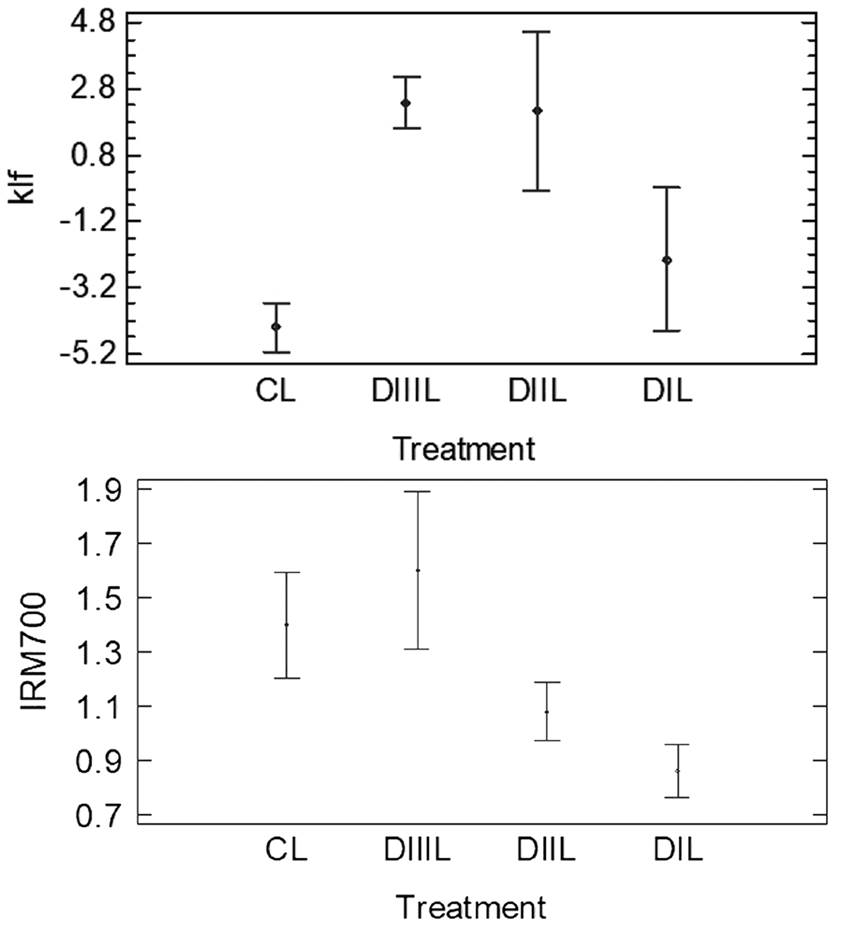Introduction
Ten micrometer diameter (PM10), or less, fine particles of anthropic origin contain magnetic minerals and traces of heavy metals that may be evidenced by magnetic methods as already reported in previous works (Qiong et al., 2013; Ihl et al., 2015; Cortés et al., 2015, 2017). These studies have used different environmental samples (plant, soil, urban dust among others) to determine the relationship between the concentration of heavy metals (Cr, Cu, Pb, Zn, etc.) and some magnetic parameters (Wang, 2013; Cejudo et al., 2015). The magnetic susceptibility (κlf) and isothermal remanent magnetization values (IRM) up to 0.7 T have shown relatively good correlation with the concentration of the majority of heavy metals (Cd, Cr, Cu, Ni, Pb, V and Zn) (Evans and Heller, 2003; Qiao et al., 2011; Bautista et al., 2014; Cejudo et al., 2015). The poor air quality in mega cities is mainly related with gas emission by cars, as they systematically emit fine particles containing both magnetic materials and heavy metals. These fine particles accumulate on the surface of the soil, floors (concrete, pavement, paving stones, etc.) and constitute the urban dust (Bautista et al., 2011; Cejudo et al., 2015; Sánchez-Duque et al., 2015; INECC, 2011; 2016).
The population is naturally exposed to urban dust that may penetrate into the human body through oral ingestion, breathing and skin contact (Baroli et al., 2007; Kwon et al., 2008). In humans, the particles with a size of 2.5 microns in diameter can enter through the respiratory tract to the region of the pulmonary alveoli and ultra-fine particles (less than 1 micron in diameter) can even penetrate into the circulatory system (Forsman and Hogstedt, 1995).
Digestive system has an important role in nutrient acquisition within the stomach and intestines where food and liquids are mixed with digestive juices to transform it into smaller molecules, which are absorbed by the intestinal walls and driven by the blood and the hepatic vein to the liver (Townsend et al., 2014). After necessary nutrients have been taken by the body, the residual waste is sent to the blood through the kidneys, where the filtration is achieved to remove most toxins and other substances (pesticides, drugs and food additives). The wastes removal occurs in tiny units inside the kidneys called nephrons, which act as filters where waste and excess water are combined and become urine (Guyton and Hall, 2011).
The main objective of this study is to reveal (if any) and quantify the presence of magnetic minerals in livers and kidneys of mice exposed to urban dust.
Magnetic experiments
In order to know whether the urban dust potentially penetrates in mice vital organs, a specific experimental procedure was carried out using three types of urban dust from Mexico City with different (contrasting) values of mass specific susceptibility and isothermal remanent magnetization at 0.7 T. (DIL, DIIL, DIIIL) and a control (CL).
The urban dust was dried in the shade and sieved to 2 mm to remove the coarse-grained fraction from the gravel. The material was put into 8 cc plastic boxes, ideal for magnetic measurements. Magnetic susceptibility (κlf) was measured at low frequency (0.46 kHz) with a MS2B Bartington and isothermal remanent magnetization (IRM) up to 0.7 T obtained at room temperature using a pulse magnetizer IM-10 (ASC Scientific).
The values of mass specific susceptibility (χlf = κlf/ρ, density) and IRM0.7T (at 0.7 T) were recorded for each urban dust samples. The urban dust was classified according to the measurements of mass specific susceptibility and isothermal remanent magnetization in low, medium and high values. A mixture of 1000 mL saline solution and 1 g of each urban dust was prepared. The mice were dosed with 16 ml per day during a total of twelve days.
Fifteen mice (Mus musculus) were divided into three lots; each lot was assigned a saline solution prepared with urban dust. The first lot of mice (Group I) was dosed with a urban dust solution having low values of IRM7.0T; the second lot (Group II) was dosed with a urban dust solution having medium values of IRM0.7T and the third lot of mice (Group III) was dosed with a urban dust solution with high values of IRM0.7T. A control lot of five mice was also used to which a saline solution without urban dust was applied.
The time and dosed amount of the solution was the same for each lot during twelve days. Twenty samples of liver and kidney were obtained after mice sacrifice. The organs were separated immediately after sacrifice, and frozen at -700C. The organ samples were preserved at 4 °C in 8 cc plastic boxes for magnetic measurements.
Once the saturation was achieved at 0.7 T, a magnetic field of 0.2 T was applied in the opposite direction to measure the IRM-0.2 value and to determines the ratio S-200 (S-200 = IRM-0.2 / IRM0.7). S-200 reflects the relative proportion of high coercivity minerals (values less than 0.75) and low coercivity minerals (values between 0.75 and 1.0) (Thompson and Oldfield, 1986; Bloemendal et al., 1992; Gubbins and Herrero-Bervera, 2007). All magnetizations were measured with a Molspin (ASC Scientific) and JR6 (AGICO) spinner magnetometers.
A simple variance analysis was performed between the groups of mice dosed with saline solution and the magnetic measurements (klf, NRM, IRM0.7, IRM0.2 and S-200). A factorial variance analysis was carried out using as factor to organs (liver and kidney) and groups of urban dust. A medium comparison analysis was carried out (Statgraphic, 2007).
Main results, discusion and concluding remarks
The three urban dust samples exhibited different values of mass specific magnetic (χlf) and isothermal remanent magnetization (IRM0.7T); urban dust I (group DIL) is characterized with relatively low value of IRM0.7T (27.7 mAm2 kg-1); urban dust II (Group DIIL) with a medium value of IRM0.7T (49.0 mAm2 kg-1) while the urban dust III (group DIIIL) yielded the highest value of IRM0.7T (95.2 mAm2 kg-1) (Table I).
Table 1 Results of magnetic measurements of three urban dust groups
| Sample |
Xlf μm3kg-1 |
IRM0.7T mAm2kg-1 |
|---|---|---|
| Dust I | 2.1 | 27.7 |
| Dust II | 2.8 | 49.0 |
| Dust III | 3.3 | 95.2 |
After twelve days dosing, 20 samples of liver and kidney were respectively obtained. The average mass for all liver sample was 0.5 g and kidney reached 0.3 g. The magnetic parameters were not normalized by density, since it was impossible to determine the sample density without affecting the integrity of the material.
The negative initial susceptibility values obtained in liver samples are very likely due to the high concentration of diamagnetic material (mainly water and organic matter) (Table II). The natural remanent magnetization (NRM) yielded values between 0.0 to 0.1 mA m- 1; the IRM0.7 provided values between 0.6 to 2.1 mA m-1; the IRM0.2 provided values between 0.6 to 2.1 mA m-1 and the S-200 ratio showed values higher than 0.8 (Figure 1 and Table II).
Table 2 Magnetic susceptibility and isothermal remanent magnetization values at 0.7 T for liver and kidney samples.
| Sample | Weight g | Klfx10-6(SI) | NRM mA m-1 | IRM 0.7TmA m-1 | IRM -0.2TmA m-1 | S -200 | S-25 |
|---|---|---|---|---|---|---|---|
| Liver samples | |||||||
| Min | 0.4 | -10.5 | 0.0 | 0.6 | 0.6 | 0.8 | 0.85 |
| Max | 0.6 | 6.0 | 0.1 | 2.1 | 2.1 | 1.0 | 1.00 |
| Mean | 0.5 | 0.0 | 0.1 | 1.2 | 1.2 | 0.9 | 0.93 |
| Kidney samples | |||||||
| Min | 0.2 | -9.1 | 0.0 | 0.6 | 0.6 | 0.1 | 0.00 |
| Max | 0.4 | 5.0 | 0.1 | 2.0 | 2.0 | 2.3 | 0.70 |
| Mean | 0.3 | -1.8 | 0.0 | 1.1 | 1.1 | 1.0 | 0.2 |
The kidney samples showed magnetic susceptibility values between -9.1 to 5.0 x 10-6 (SI); NRM values between 0.0 to 0.1 mA m-1; IRM0.7 values between 0.6 to 2.0 mA m-1; the IRM0.2 showed values between 0.6 and 2.0 mA m-1 and the S-200 ratio showed the higher values between 0 and 2.3. Values of S-200 close to 1.0 indicate high proportion of low coercivity minerals. In a single case however, R4S1 kidney sample showed a value less than 0.7 indicative of high coercivity minerals (Table II, Figure 2).

Figure 2 Magnetic susceptibility and isothermal remanent magnetization values at 0.7 T for kidney samples.
The variance statistical analysis yielded significant differences between the values obtained from liver samples. The highest values correspond to the DIII treatment with higher concentration of ferromagnetic minerals (Figure 1). In case of IRM0.7 parameters, although significant changes were also detected, the values from control samples resulted relatively high most probably due to simple contamination.
The kidney samples associated with the high magnetic concentration urban dusts showed higher values of both susceptibility and IRM0.7 as expected (Figure 2).
Magnetic parameters such as κlf, and IRM-0.7 showed that they could be used for the identification of magnetic signal in mouse organs by ingestion of urban dust. The natural remanent magnetization measurements were not adequate to identify the intake of magnetic particles in mice at low exposure.
The liver samples showed the highest concentrations of magnetic particles compared to the kidney samples. It follows that, at low exposure times to urban dust, damage could be detected first in the liver.
The IRM acquisition curves in liver samples exhibited the following behavior: between 0 to 100 mT fields, the remanent magnetization increases proportionally with the applied field. For magnetic fields between 100 to 200 mT, the growth of the magnetization stops and the saturation is reached. Liver samples of Group I showed relatively low values of saturation remanent magnetization (IRM0.7 = 0.75 mA m-1), while higher IRM0.7 values were reported for group III (IRM0.7 = 2.2 mA m-1) (Figure 2 and 3).

Figure 3 Isothermal remanent magnetiza tion acquisition curves for liver and kidney Mus musculus samples.
High IRM values of 1.5 mAm-1 were recorded for kidney samples of group III, whereas samples of group II and I exhibited almost the same value of IRM0.7 (1.2 mAm-1, Figure 3).
The liver and kidney samples showed values of S-200 close to 1.0 indicating high proportions of low coercivity minerals (LCM) and low proportion of high coercivity mineral (HCM) (Figure 4).

Figure 4 Relationship between S-200 and measures of IRM0.7 for all liver (circles) and kidney (square) samples.
The results obtained in this study showed that the liver and kidney of mice of Mus musculus species present significant magnetic response to the applied fields. The group of mice dosed with the highest concentrations of magnetic particles (dust III) yielded a higher concentration of magnetic minerals in their liver and kidney and vice versa. These experiments also indicated that low coercivity ferrimagnetic minerals (possibly magnetite) are present in in the liver and kidney of mice.
On the other hand, magnetic particles are being used in biomedical research because they can be carriers of drugs to attack malignant tumors (Chao et al., 2012) and to trap elements such as heavy metals and toxic substances in the blood (Ramanujan, 2009), and other apps (Li et al., 2016)..It is also known that magnetic particles in high concentration can cause cytotoxicity, DNA damage, oxidative stress, epigenetic events and inflammatory processes (Sing et al., 2010); Furthermore, it can accumulate in organs such as liver, brain, spleen and lungs subsequent to inhalation and penetration through hair follicles (Baroli et al., 2007; Kwon et al., 2008). However, little research has been done on the use of magnetic particles as indicators of contamination in animal tissues.
The distribution, transformations and biotransformations of the magnetic particles in the body are scarcely known (Levy et al., 2011). In addition, when the research is done with environmental samples, such as urban dust (mixture of particles in both size and chemical composition) very few studies are found.
These type of studies are relevant also for human health, showing that adults ingest approximately 50 mg per day of ambient dust and soil, while infants or children ingest twice as much (100-110 mg per day) (US EPA, 2011).
The main finding of the present study is that the liver was the organ with the highest magnetic signal. The kidney also achieved a magnetic signal but of smaller magnitude as compared with the liver.
This reconnaissance study confirms that fine magnetic minerals may be absorbed and stored by mice livers and kidneys in relatively small concentrations but also in small exposure time. The same mechanism may be speculated for the human vital organs. However, more experiments are required considering: a) a higher mice population; b) longer exposure to urban dust; c), the introduction of control lots; and e) the identification of the magnetic particles











 nova página do texto(beta)
nova página do texto(beta)



